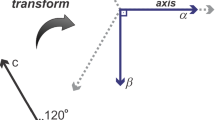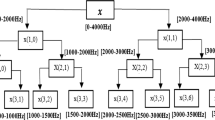Abstract
This paper aims at investigating a novel solution to the problem of defect detection from images, that can find applications in the design of robust quality control systems for the production of furniture, textile, integrated circuits, etc. The suggested solution focuses on detecting defects from their wavelet transformation and vector quantization related properties of the associated wavelet coefficients. More specifically, a novel methodology is investigated for discriminating defects by applying a supervised neural classification technique, employing a Multilayer Perceptron (MLP) trained with the conjugate gradients algorithm, to innovative multidimensional wavelet based feature vectors. These vectors are extracted from the K-Level 2-D DWT (Discrete Wavelet Transform) transformed original image using Vector Quantization techniques and a Principal Component Analysis (PCA) applied to these wavelet domain quantization vectors. The results of the proposed methodology are illustrated in defective textile images where the defective areas are recognized with higher accuracy than the one obtained by applying two rival feature extraction methodologies. The first one of them uses all the wavelet coefficients derived from the k-Level 2-D DWT, while the second one uses only image intensities characteristics. Both rival methods involve the same classification stage as the proposed feature extraction approach. The promising results herein obtained outline the importance of judicious selection and processing of 2-D DWT wavelet coefficients for industrial pattern recognition applications.
Preview
Unable to display preview. Download preview PDF.
Similar content being viewed by others
References
Meyer, Y. “Wavelets: Algorithms and Applications”, Philadelphia: SIAM, 1993
Kolaczyk, E. “WVD Solution of Inverse Problems”, Doctoral Dissertation, Stanford University, Dept. of Statistics, 1994
Lee, C. S., et. al, “Feature Extraction Algorithm based on Adaptive Wavelet Packet for Surface Defect Classification”, to be presented in ICIP 96, 16–19 Sept. 1996, Lausanne, Switzerland.
Haykin, S. “Neural Networks, A comprehensive foundation”, Prentice Hall, Second edition, 1999.
Porter, R. and Canagarajah, N. “A Robust Automatic Clustering Scheme foe Image Segmentation Using Wavelets”, IEEE Trans. on Image Processing, April 1996, Vol. 5, No. 4, pp.662–665.
Unser, M. “Texture Classification and Segmentation Using Wavelet Frames”, IEEE trans. Image Processing, Vol. 4, No. 11, pp.1549–1560, 1995
Ryan, T. W., Sanders, D., Fisher, H. D. and Iverson, A. E. “Image Compression by Texture Modeling in the Wavelet Domain”, IEEE trans. Image Processing, Vol. 5, No. 1, pp. 26–36, 1996.
Antonini, M., Barlaud, M., Mathieu, P. and Daubechies, I. “Image Coding Using Wavelet Transform”, IEEE trans. Image Processing, Vol.1, pp. 205–220, 1992.
Donoho, D. L. and Johnstone, I. M. “Ideal Time-Frequency Denoising.” Technical Report, Dept. of Statistics, Stanford University.
Author information
Authors and Affiliations
Editor information
Editors and Affiliations
Rights and permissions
Copyright information
© 2002 Springer-Verlag Berlin Heidelberg
About this paper
Cite this paper
Karras, D., Mertzios, B. (2002). Improved Defect Detection Using Novel Wavelet Feature Extraction Involving Principal Component Analysis and Neural Network Techniques.. In: McKay, B., Slaney, J. (eds) AI 2002: Advances in Artificial Intelligence. AI 2002. Lecture Notes in Computer Science(), vol 2557. Springer, Berlin, Heidelberg. https://doi.org/10.1007/3-540-36187-1_56
Download citation
DOI: https://doi.org/10.1007/3-540-36187-1_56
Published:
Publisher Name: Springer, Berlin, Heidelberg
Print ISBN: 978-3-540-00197-3
Online ISBN: 978-3-540-36187-9
eBook Packages: Springer Book Archive




